Secrets to Winning More Clients: Storytelling in Presentations

Let’s face it, running a presentation that holds attention and wins you clients can be a challenge.
If you’ve ever stood in front of a room and felt like you’re talking to yourself, you’re not alone. I’ve been there.
Tapping into the power of storytelling can transform a standard presentation into an experience that sticks with your audience long after it’s over.
Don’t take my word for it. There’s data to back that up below.
Read on for that data plus tips to infuse storytelling techniques in your presentations and ultimately, land more clients.
Storytelling benefits
The importance of storytelling can’t be understated. Facts, figures, and ideas can be difficult to grasp (not to mention boring) when presented on isolated slides.
But, when you weave these elements into a story, you keep your target audience paying attention.
This goes way back to the start of human history when people sat around the fire and told each other stories.
In fact, research by Princeton University neuroscientist Uri Hasson found that listeners’ neurons closely sync with a storyteller’s brain as they listen to a story.
Research by psychologist Jerome Bruner showed that people are 20 times more likely to remember facts that are part of a story. Tweet thisSo, how exactly can you use storytelling effectively in presentations?
There are actually many different types of storytelling structures you can leverage to frame your message and build your brand identity. Let’s dive into a few.
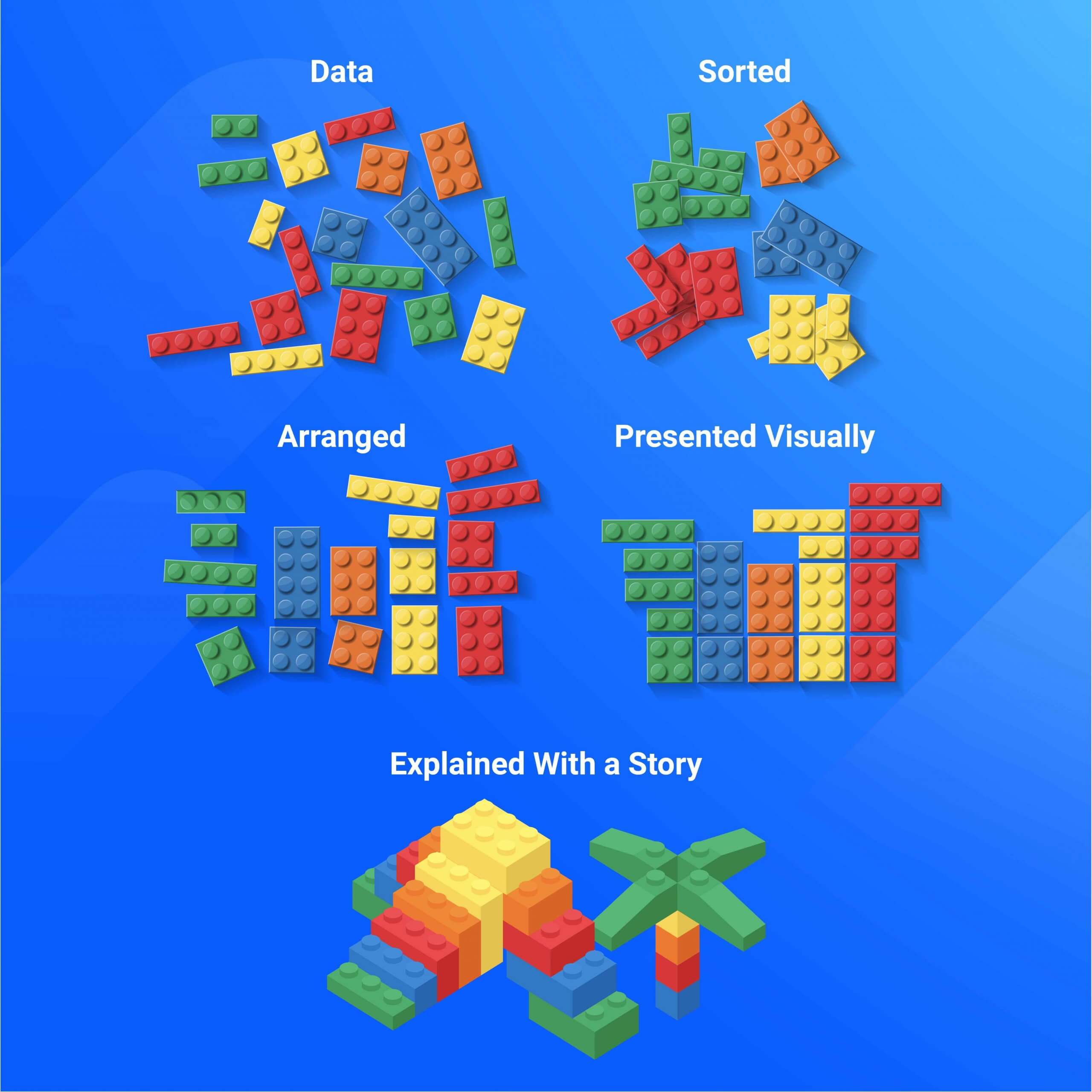
Types of storytelling structures
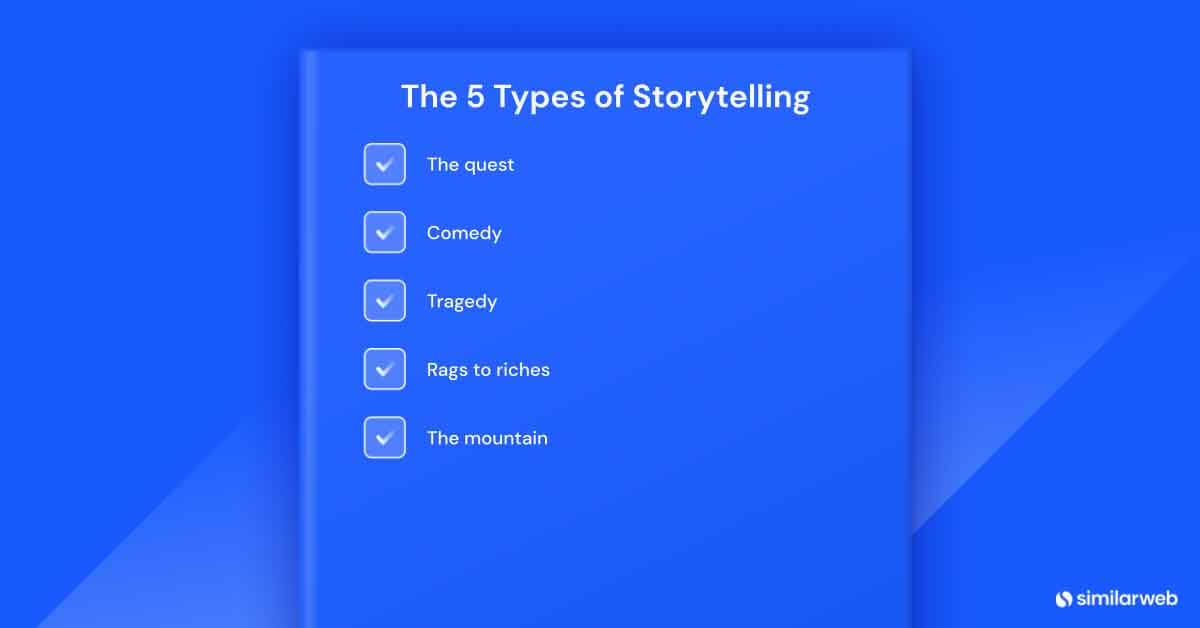
The quest
This type of storytelling presentation can be powerful in demonstrating the value of working as a team. It invariably involves a group that sets off on a journey or project typically wrapped up in some kind of higher mission. They may meet small challenges at the start of their quest, until they’re finally confronted by a large, dangerous test. In the end, they overcome all challenges to achieve success.
Example: Lord of the Rings
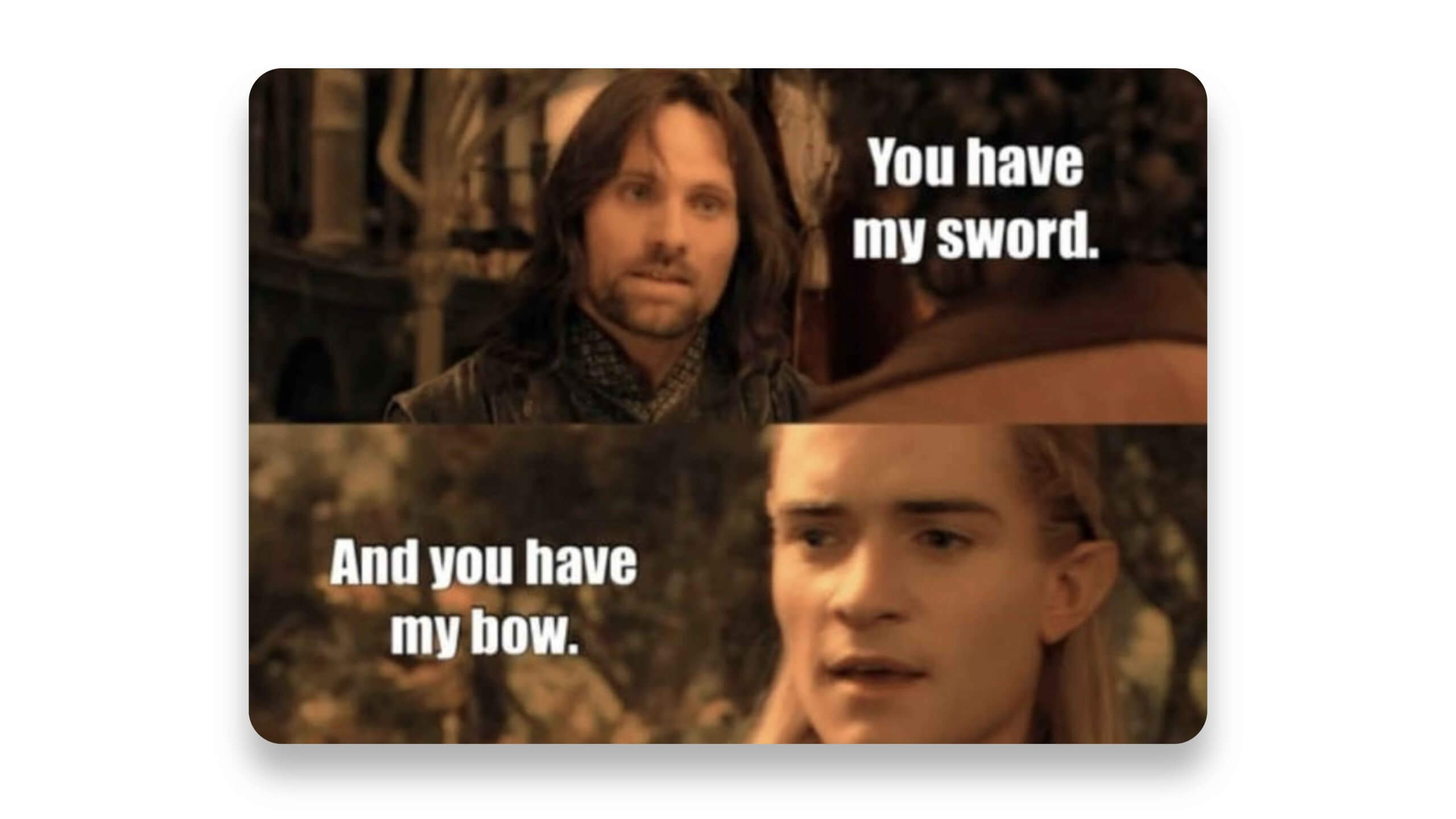
How to use it: A quest structure can help you showcase to a client how you can team up and help them overcome their greatest challenges in order to ultimately achieve their goals.
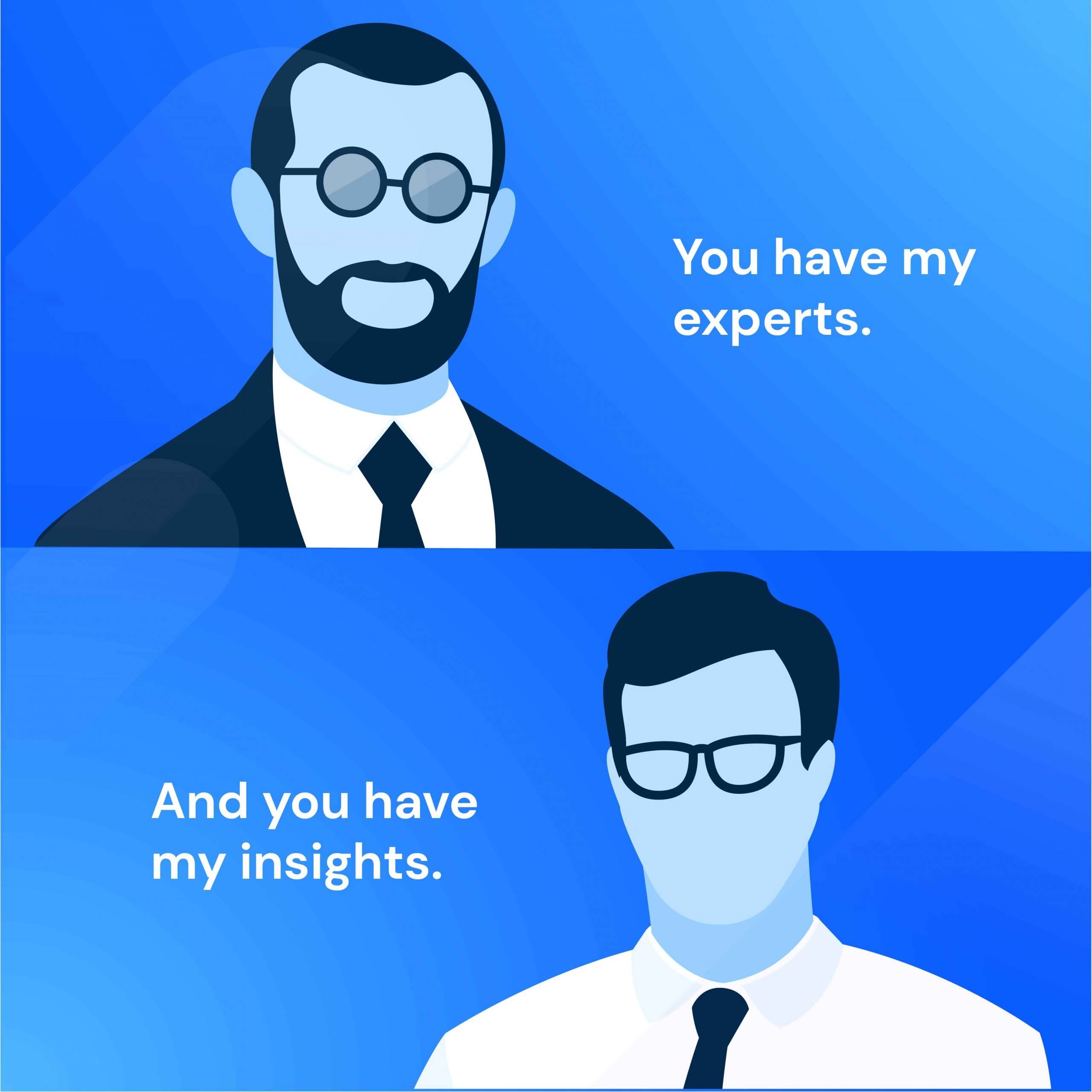
The comedy
A comedy is not just about telling jokes – typically, this type of storytelling presentation starts off with confusion before attaining clarity at the end. This is very useful for showing the value of open communication.
In the classic comedy structure, the main characters are destined to be together, but are kept apart through confusion and misunderstanding, which creates a seemingly unresolvable conflict.
However, the truth eventually comes out, and the main characters of the story are united in a happy ending.
Example: A Midsummer Night’s Dream
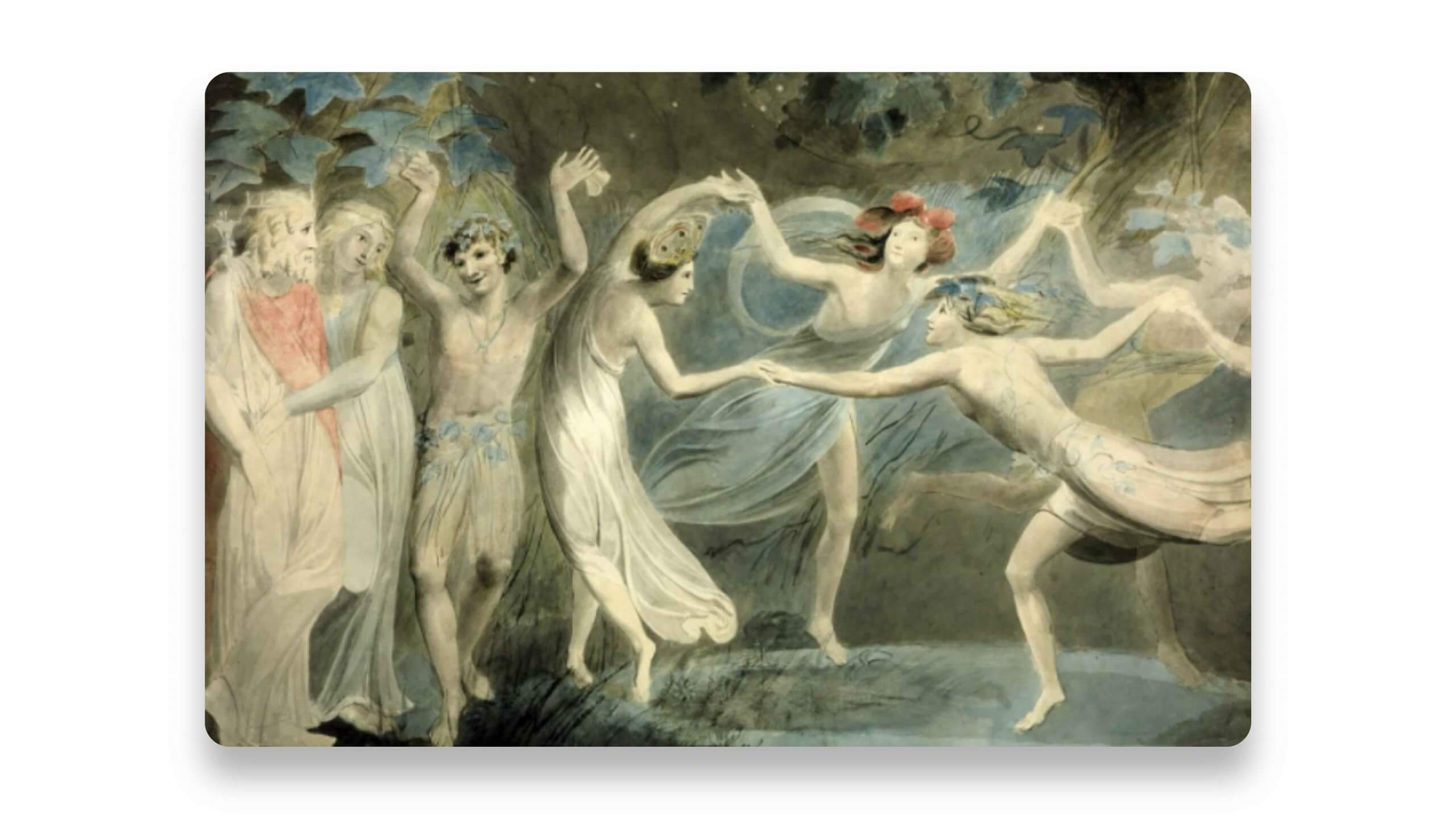
How to use it: Laughable confusion and frustrations can be easily cleared up with a little help from your agency’s services.

The tragedy
The other classic Shakespearean storytelling structure is the tragedy. In this type of story, rather than everything turning out peachy in the end, the ending ultimately sees the downfall of enemies and competitors.
In storytelling through presentation, it can be useful to show that we sometimes make mistakes, and demonstrate what we can learn from them.
Example: Romeo and Juliet
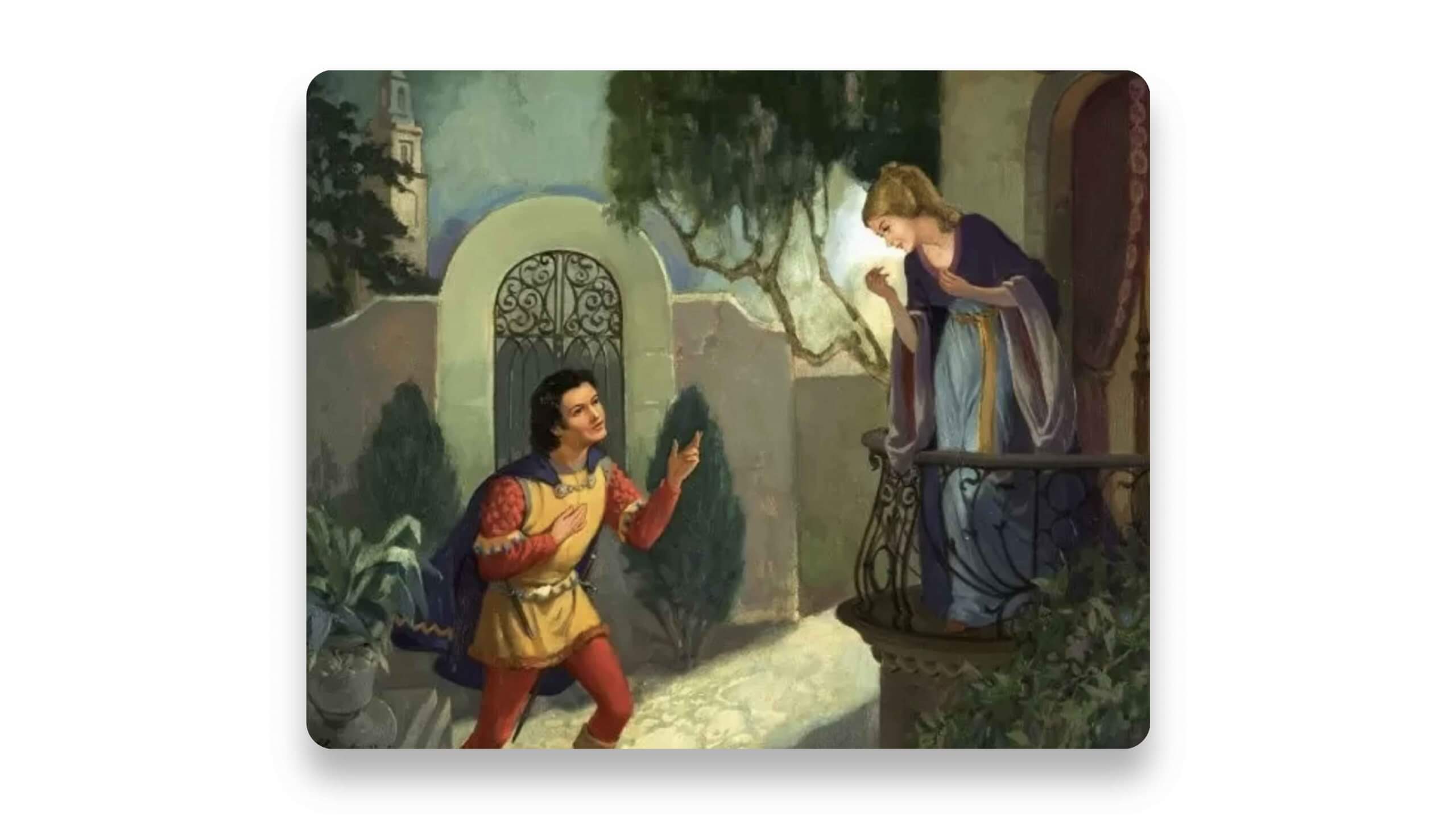
How to use it: Show your clients how you can help get them through particularly difficult and trying times. For example, the start of COVID-19 was a tragedy for many industries. An agency could show how even in this environment it can help travel companies, like the U.K.’s leading travel insurance Staysure. Bottom line, when industries are facing uncertainty and companies are seeing massive losses, an agency needs to showcase how they can help turn things around and get those same companies to succeed even in the toughest of circumstances.

Rags to riches
This storytelling structure takes the audience on a journey from adversity to success. It doesn’t have to be about literally getting rich financially – it can be any tale of going from lagging to pulling ahead.
The structure starts by setting the scene with the main character’s difficult early life before some event or opportunity arises. We then follow them through minor successes and they typically hit rock bottom at some point, before they rise up to meet the challenge and ultimately have a major win.
Example: Cinderella
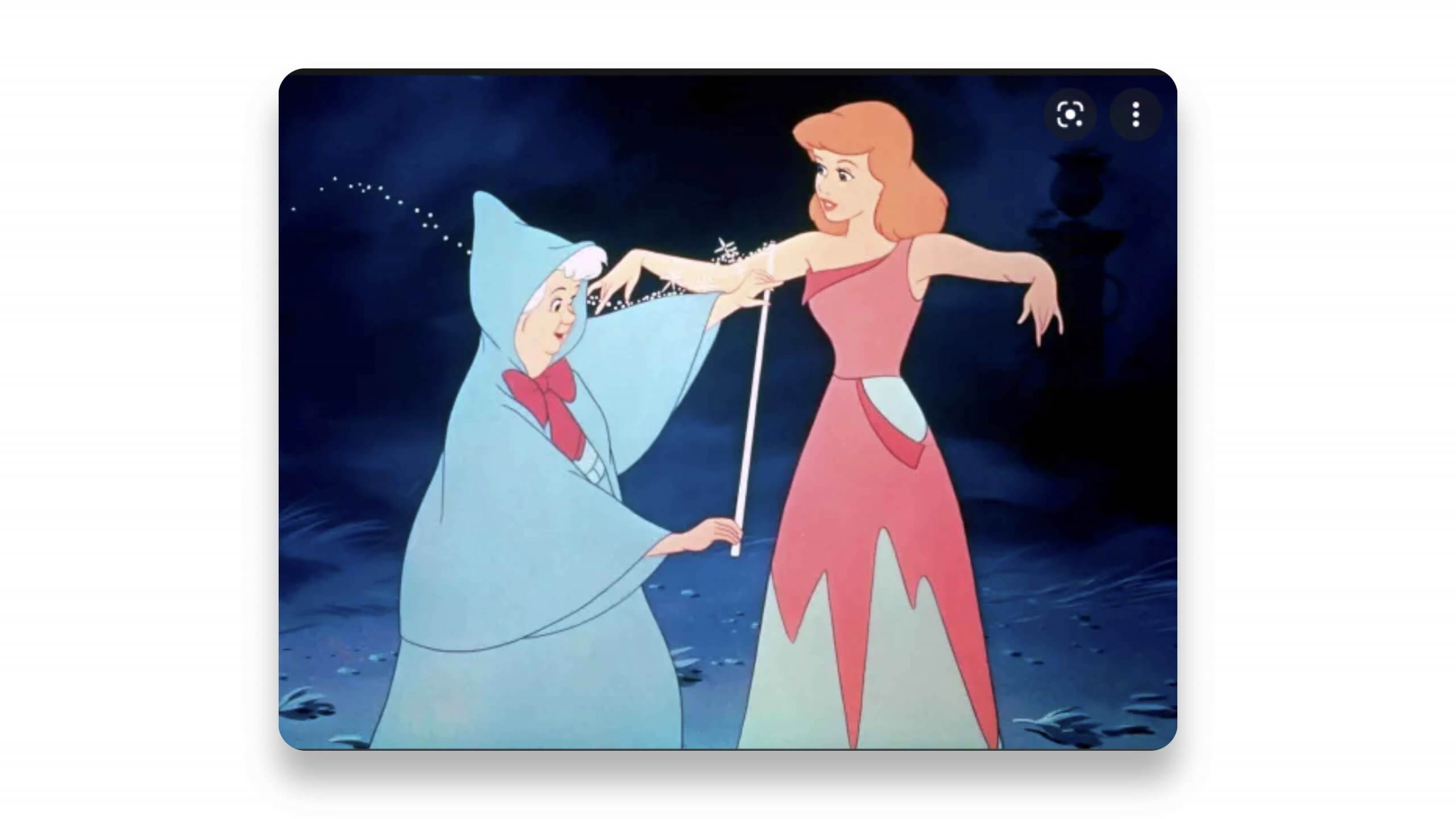
How to use it: Think of your agency as the Fairy Godmother that can help your clients live happily ever after.

The Mountain
The mountain storytelling structure focuses on overcoming challenges. This is typically an emotional rollercoaster, where initial attempts to climb the mountain aren’t successful.
However, after trying a different approach, the main character finally wins.
In traditional stories, this could mean defeating a monster or saving the princess, but the same structure could also be used to show how we can succeed in adapting to a fast-changing market.
Example: David and Goliath
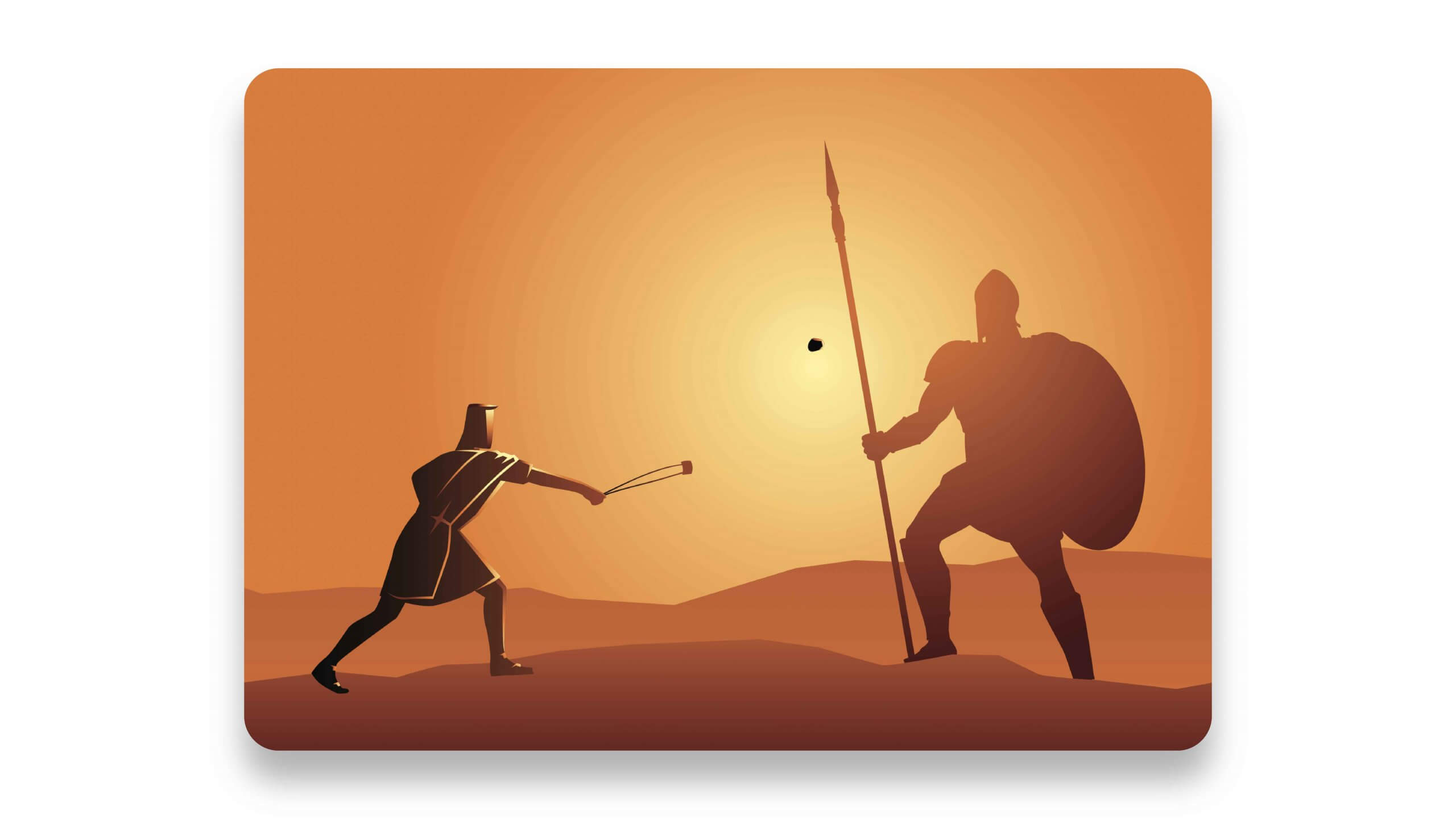
How to use it: Illustrate how your client is struggling to overcome a huge obstacle, and how your agency can be the key tool to ultimately allow them to overcome their problems and bring them success.

5 tips for crafting the best storytelling presentations
1. Use visuals
Using the right visuals can elevate your story (and help keep your clients’ attention). The best storytelling slides feature visual elements such as photos, videos, GIFs, maps, graphs, charts, and infographics.
Visuals bring your story to life. While graphs and images quickly and effectively communicate information or an idea, words elaborate on that information or idea. Using both will make your presentations twice as effective.
2. Know your message
As with any kind of presentation, it’s important to clearly communicate your message throughout the story.
You’re not telling a story just for the entertainment value, you want to leave an impact. Before mapping your presentation, ask yourself, what is the one big message you want to stick with your target audience?
Keep your story focused, and don’t get distracted by unnecessary details.
3. Tap into emotion
Emotions are a big part of effective storytelling. Tapping into your audience’s emotions will mean they’re more likely to be moved to action. Think of those gut-wrenching commercials about neglected puppies that move you to donate to a charity.
Whether you want your listeners to sign up for a service, invest in your idea, or something else, they’re more likely to do so if they feel compelled by a certain emotion.
One of the most efficient ways to tap into your audience’s emotions is by using metaphors and analogies. These are handy devices that will draw your listeners into your story and encourage them to become emotionally involved.
4. Make it relatable
Make sure the story connects with your clients. Relatability is crucial if you want to engage with your audience and tap into their emotions.
When I watch a movie or read a book that has a character or a story I can relate to, I keep thinking about it even after it’s over and recommend it to friends.
Think about it for a second. What is a movie or book you really related to?
People don’t relate well to stories that are too far removed from their own interests, values, or experiences. Know your audience and tell stories with characters and settings you know they’ll be able to visualize and connect with.
Equally, your story should relate to the rest of your presentation. Telling a story that doesn’t have anything to do with your topic won’t engage your audience – instead, it’ll do the opposite. Only use storytelling when it’s relevant to both your audience and your presentation.
5. Use data to make your story compelling
Storytelling and data aren’t mutually exclusive. In fact, relevant data can help make your stories more compelling. In the same way, storytelling can be enormously helpful in allowing people to understand complex data – this is known as data storytelling.
A great way to use data to support your storytelling is through visual elements like charts and infographics. Just be sure to follow the same rules outlined above: make sure the data you use is direct, concise, relevant, and relatable. To do this effectively, you need the right market research and competitive analysis tool for your agency to find data that matters.
Prime example: Wordle. When we dive into Similarweb data about the popular online puzzle, we quickly see a success story, eager to emerge. The Wordle web app gained over 2,040% more traffic from October to December 2021 than it did during the previous three months.
So, when Wordle was acquired by The New York Times for a seven-figure sum, we weren’t surprised by the happily-ever-after ending.
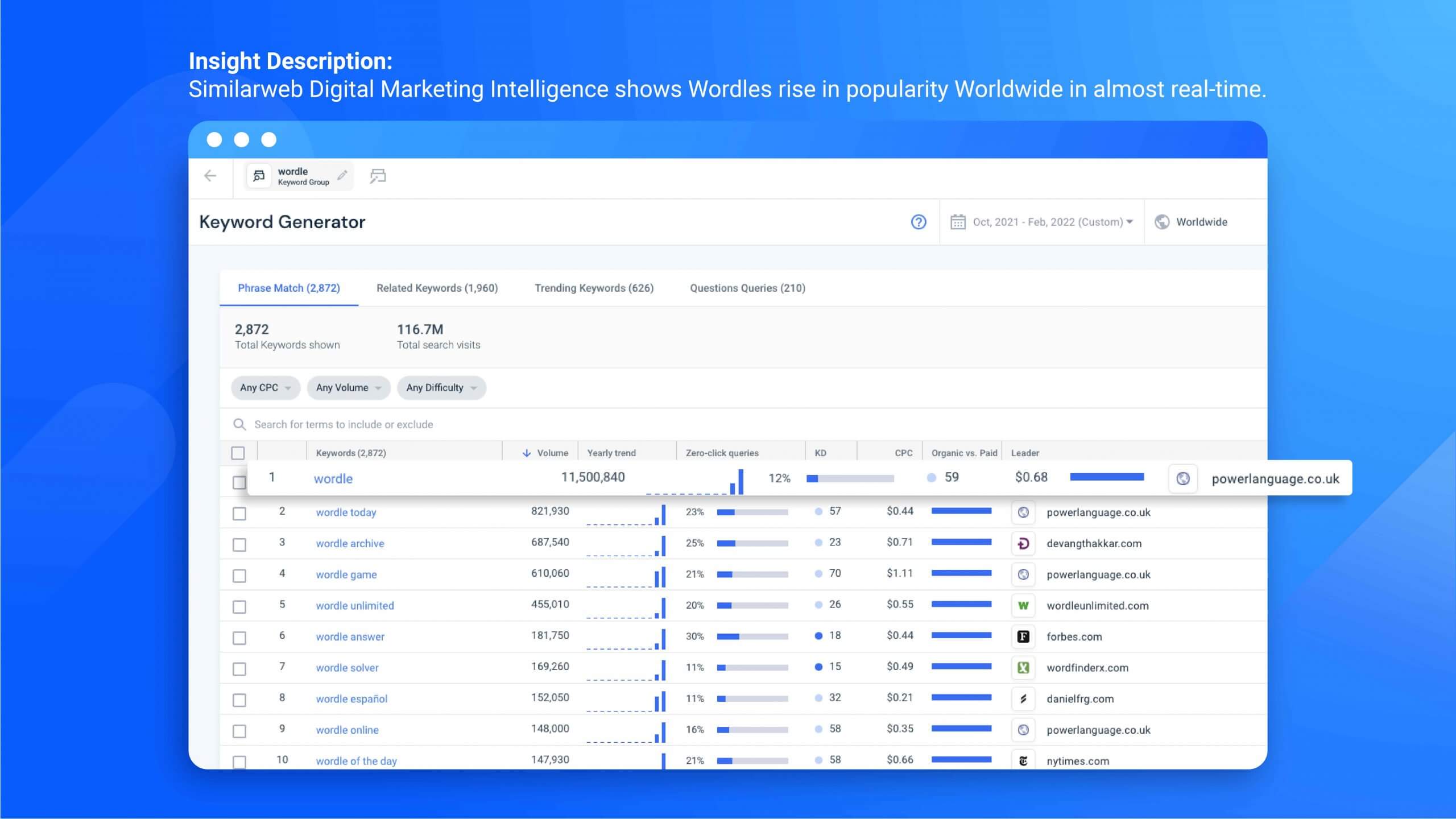
Storytelling presentation examples
Here are some effective storytelling presentation examples so you can see these techniques in action.
Example 1: Bill Gates’ We’re Not Ready TED Talk

Type of storytelling structure: The tragedy
In his famous 2015 TED Talk, Bill Gates outlines what could happen if a deadly viral pandemic swept the world. After talking through a gut-wrenching doomsday scenario, he offers preventative measures that could help the world avert disaster in the future. The talk conveys a clear message of the need to take action to prevent a future pandemic.
Example 2: Budweiser Lost Dog Commercial

Type of storytelling structure: The quest
When this Budweiser commercial premiered in the 2015 Superbowl, it made a big impression thanks to its emotional story. In the commercial, a yellow lab gets lost when he runs away from his owner’s truck before meeting a Clydesdale horse called “Buds.” The two team up to help the lab find his way home.
Example 3: Nicole Bishop’s Elevator Pitch for Entrepreneur Magazine

Type of storytelling structure: The comedy
It may not seem obvious at first how Nicole Bishop’s story about her Lyme disease being misdiagnosed as MS is a comedy story arc. However, this is a short and powerful story that clearly demonstrates the value of truth and good communication to sell Bishop’s AI tool, Quartolio, which offers a solution to this problem. This is a fantastic example of how to use a short, concise storytelling presentation to sell your business or idea.
Example 4: Living Beyond Limits TED Talk by Amy Purdy

Type of storytelling structure: Rags to riches
In this compelling TED Talk, professional snowboarder Amy Purdy talks about how she lost both her legs to bacterial meningitis. In this rags-to-riches storytelling structure, she overcomes the initial adversity, learns to snowboard again, and ultimately wins a medal at the Paralympics.
Example 5: Malala Yousafzai Inspirational Speech

Type of storytelling structure: The mountain
Malala Yousafzai tells her story of being a young schoolgirl in Pakistan that spoke out against the Taliban, who had banned women and girls’ rights to get an education. One day, at the young age of 15, she was shot and injured in an attempted murder by the Taliban. Despite this tragedy, Malala never stopped speaking out for women’s rights in Pakistan and around the world. In fact, the attempted murder put even more fire in her spirit, and she became a prominent education activist – and even became the youngest recipient of the Nobel Peace Prize.
What’s your story?
Stories help people to interpret data, engage their attention, and ultimately compel them to action.
Although there is a range of different common storytelling structures, all good stories share the same elements: they have a main character, introduce a challenge, and show how that character ultimately overcomes that challenge.
Effective storytelling in presentations will not only keep your audience awake, but you’ll take them on a journey with you that will let you communicate your ideas, convince them of your point of view, or both!
The best storytelling presentations feature visual elements and data, are relatable, and tap into the audience’s emotions.
Just make sure you keep your stories genuine, relevant, and on message.
The #1 content marketing tool - get started
Give it a try or talk to our marketing team — don’t worry, it’s free!







